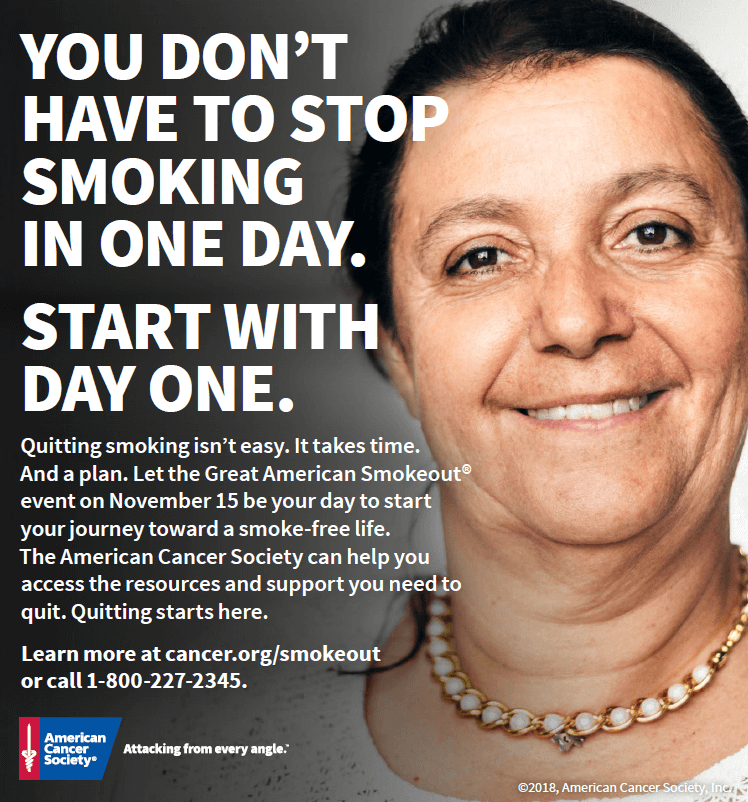Quitting smoking isn’t easy. It takes time. And a plan. Let today’s 43rd Annual Great American Smokeout event be your day to start the journey toward a smoke-free life.
You’ll be joining thousands of smokers across the country in taking an important step toward a healthier life and reducing your cancer risk. You don’t have to stop smoking in one day. Start with “Day 1”.
More than 34 million Americans still smoke cigarettes, and smoking remains the single largest preventable cause of death and illness in the world. Smoking causes an estimated 480,000 deaths every year, or about 1 in 5 deaths. And more than 16 million Americans live with a smoking-related disease.
The Great American Smokeout event, which started in the 1970s, has helped dramatically change Americans’ attitudes about smoking. These changes have led to community programs and smoke-free laws that are now saving lives across the country. Quitting smoking improves health immediately and over the long term – at any age. Stopping smoking is hard, but you can increase your chances of success with help. Getting help through counseling and medications doubles or even triples your chances of quitting successfully.
How does your body recover after quitting?
- 20 Minutes – Your heart rate and blood pressure drop.
- 12 Hours – The carbon monoxide level in your blood drops to normal.
- 2 Weeks to 3 Months – Your circulation improves, and your lung function increases.
- 1-9 Months – Coughing and shortness of breath decrease; cilia start to regain normal function in the lungs, increasing the ability to handle mucus, clean the lungs, and reduce the risk of infection.
- 1 Year – The excess risk of coronary heart disease is half that of someone who continues to smoke. Your heart attack risk drops dramatically.
- 5 Years – The risk of cancer of the mouth, throat, esophagus, and bladder is cut in half. Cervical cancer risk falls to that of a non-smoker. Stroke risk can fall to that of a non-smoker after 2-5 years.
- 10 Years – The risk of dying from lung cancer is about half that of a person who is still smoking. The risk of cancer of the larynx (voice box) and pancreas decreases.
- 15 Years – The risk of coronary heart disease is that of a non-smoker’s.
It’s time to encourage family, friends, and colleagues to join in on committing or recommitting to fully smoke-free lives! Visit the American Cancer Society page “How to Quit Smoking” for access to resources and support. #dayone #greatamericansmokeout








